Miami building collapse: What could have caused it?
- Published
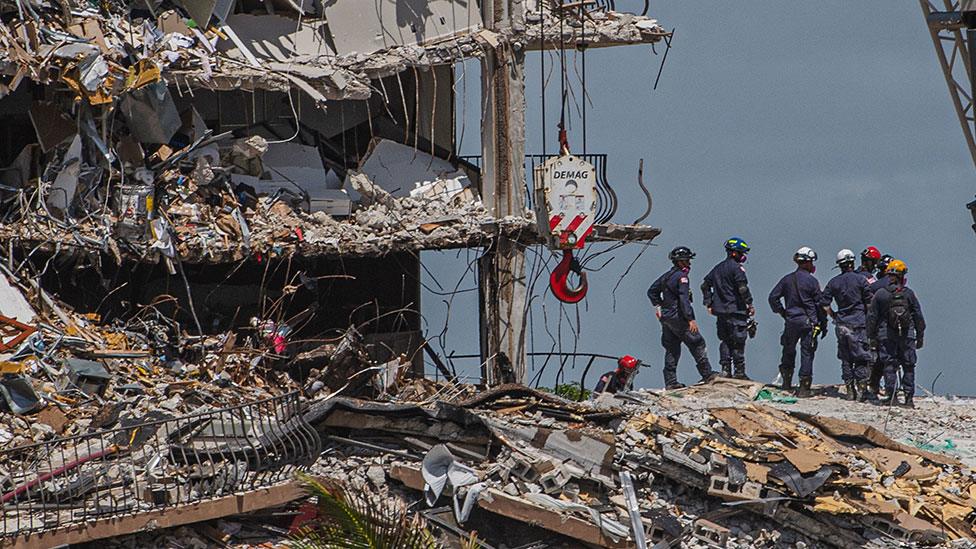
Questions are being raised about what caused a 12-storey apartment complex to collapse in Surfside, near Miami in Florida.
Experts gathering information at the scene will have to consider a range of possible causes - from structural defects to environmental influences - and whether a combination of factors may have triggered the sudden collapse of the 40-year-old block.
Video footage offers clues
Video footage taken by a surveillance camera mounted on a neighbouring condominium shows that the building did not fall at once, but rather fell in stages.


First, the south-facing central section collapsed, before the north-facing central section followed just three seconds later. Five seconds after that, the east-facing section crumbled.
Some experts who have viewed the footage believe that the initial collapse was at the base of the building, around the pool area in front of the south-facing central section.
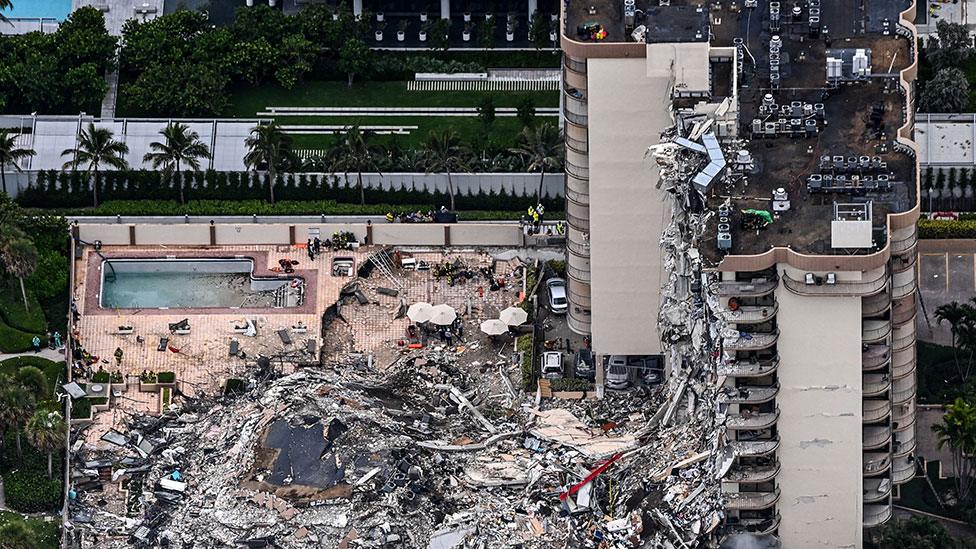
Reports say one resident, Cassie Stratton, was on the phone to her husband in the moments before the collapse looking out of the window. She told him: "Honey, the pool is caving in."
Aerial images of the aftermath show the decking area around the pool having collapsed into the underground car-parking area below.
What were the issues raised in the 2018 inspection?
The ground floor pool deck was identified as an area of concern in a structural inspection three years ago, with reports stating that it had got much worse since then.
The 2018 inspection, external highlighted "a major error" in the original design.
The engineer, Frank Morabito, warned that the deck was not sloped to drain, so any water "sits on the waterproofing until it evaporates".

The report said the waterproofing below the pool deck was "beyond its useful life" and causing "major structural damage to the concrete structural slab below these areas".
Failure to replace the waterproofing in the near future would, it said, cause the extent of the concrete deterioration to "expand exponentially".
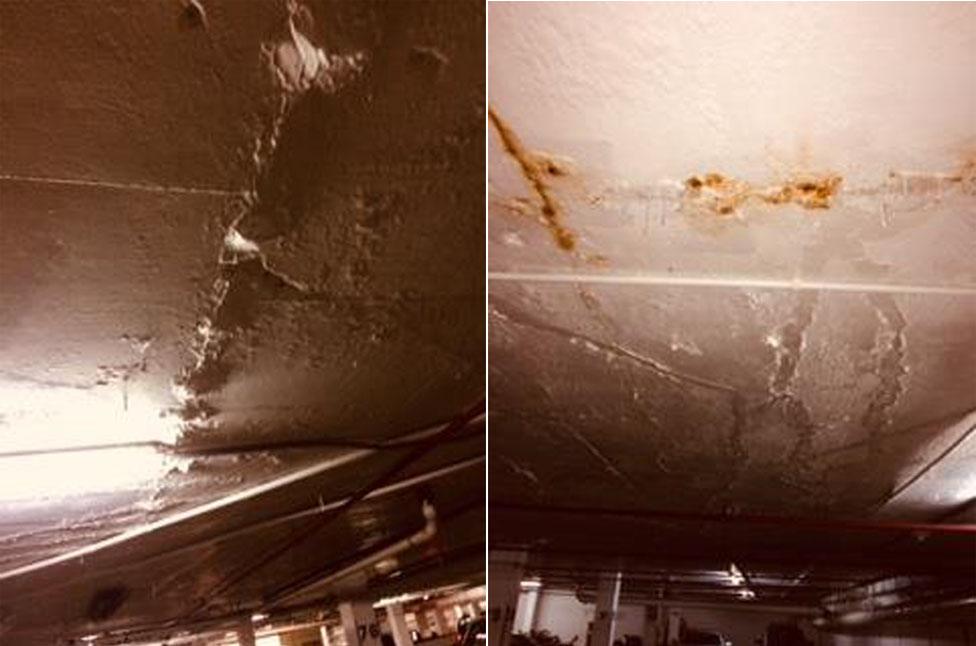
Images from the 2018 report show cracks in the slabs in the parking area's ceiling
Mr Morabito's report also referred to "abundant cracking… of columns, beams and walls" in the basement parking garage.
Although the report urged concrete repairs to be carried out in "a timely fashion", it didn't suggest the 40-year-old building was at any imminent risk of collapse.
Earlier this year, the president of the condominium association warned residents that the damage in the parking area had got "significantly worse" and repairs needed to the whole building had risen from US$9m (£6.6m) to more than US$15m.
Jean Wodnicki told residents the concrete deterioration was accelerating and the roof situation was also much worse, according to the letter published by the New York Times.
Morabito Consultants have said that at the time of the collapse, roof repairs were under way but concrete restoration had not yet begun.
How concrete damage can affect buildings
Structural engineer, Greg Batista, who has carried out thousands of inspections of buildings in Florida, said damage to the concrete was one possible explanation for the collapse.
"These buildings up and down the coast are susceptible to what we call spalling," he told the BBC.
"Basically, the reinforcing steel inside the concrete, it basically rusts and it expands up to seven times its volume. The concrete that surrounds it breaks and that causes significant deterioration in the structural integrity of that particular member, whether it's a beam or a column. All it takes is one beam or one column to fail and it causes a domino effect."
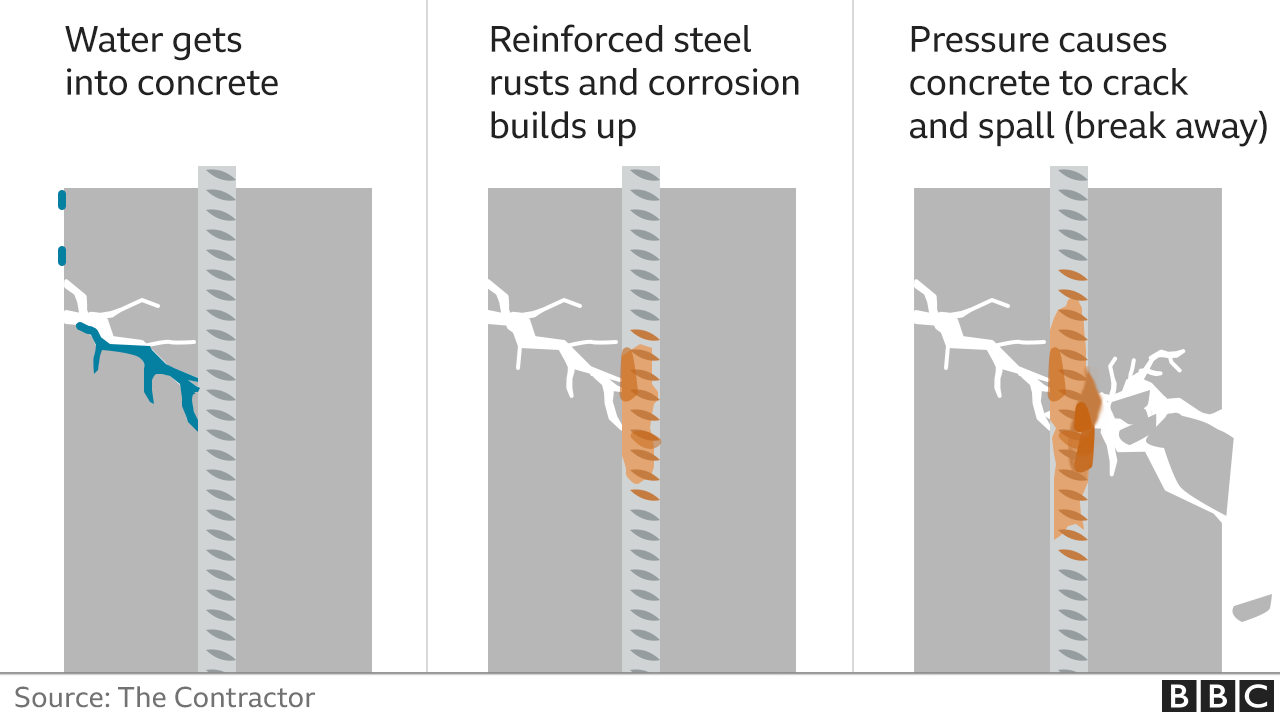

Did land movement contribute?
A study from researchers at Florida International University published last year found that the building was sinking at a rate of about two millimetres per year in the 1990s.
Such movement can cause cracking and contribute to structural problems.
Professor Shimon Wdowinski said the study did not focus on Champlain Towers South in particular, but the building stood out as one of the places that showed the most subsidence.
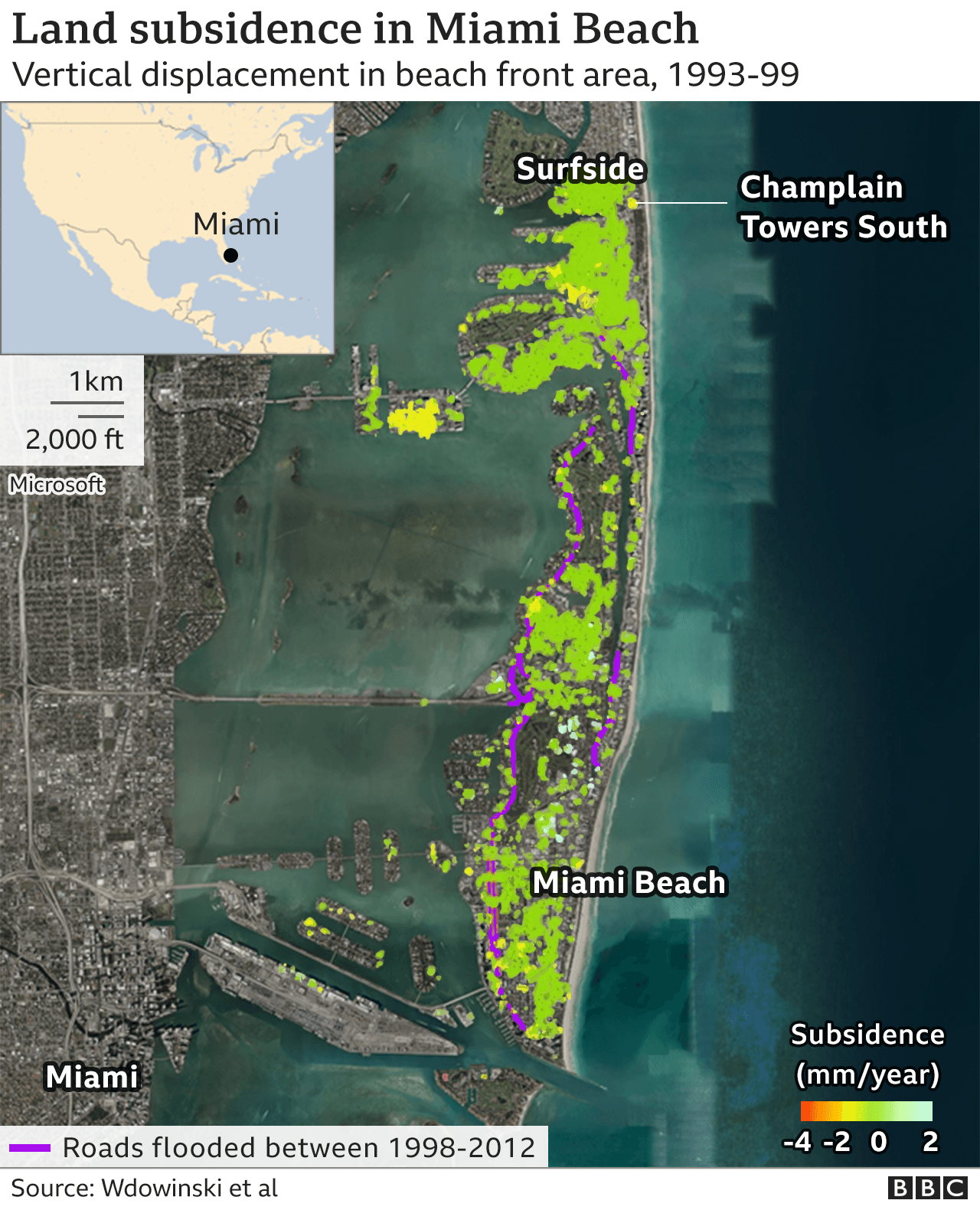
It had not sunk much, he said, but as the study was more than 20 years ago it was not known whether the building had sunk further and whether this had affected its foundations.
"Maybe a point was reached where the structure couldn't hold the load and collapsed. But this is a structural problem. They are not things that I study," he told BBC Mundo, the BBC's Spanish language news service.
"What we do know is that the building that collapsed in Miami has been sinking for decades, but that alone does not explain the collapse."

Could new building work be a factor?
Some people believe it is possible that vibrations from the recent construction of the adjacent 18-storey tower block - Eighty Seven Park - may have caused some ground movement.
Champlain Towers South residents raised concerns in 2019 that they had felt movement and shaking during the construction work, but were told to monitor the situation.
Are other buildings at risk of collapse?
Champlain Towers South was built on reclaimed wetland in 1981.
Most blocks along the coast, and high-rise buildings elsewhere, are built on pile foundations, using columns of concrete and steel to transfer the load of the building into the ground.
A short distance away is Champlain Towers North, built to an almost identical design.

Residents are seeking reassurance that their buildings do not face similar problems and local authorities have ordered checks to be carried out.
The search and rescue operation in the rubble was halted on Thursday over concerns about the part of Champlain Towers South that remains standing. Structural engineers are worried a large column hanging from the structure could fall and damage support columns in the basement garage. Concrete floor slabs were also found to have shifted - posing a risk of further collapse.
Miami-Dade County Mayor Daniella Levine Cava said she hoped the operation to find survivors, or victims, would continue as soon as it was safe to do so.
When will we know the cause of the collapse?
Atorod Azizinamini, Director of Moss School of Construction, Infrastructure and Sustainability at Florida International University, said the investigation into the Champlain Towers South collapse would take time.
He said structural engineers would look at design plans, how the building was constructed, take samples of steel and concrete, look at signs of corrosion, the foundations and if any unusual event took place before the collapse.
Once they have the information they can simulate different scenarios and pinpoint how the collapse took place, he said.
Federal investigators are at the site and working to find the cause of the collapse and ensure evidence is preserved. Debris is being taken to a large warehouse to be examined.